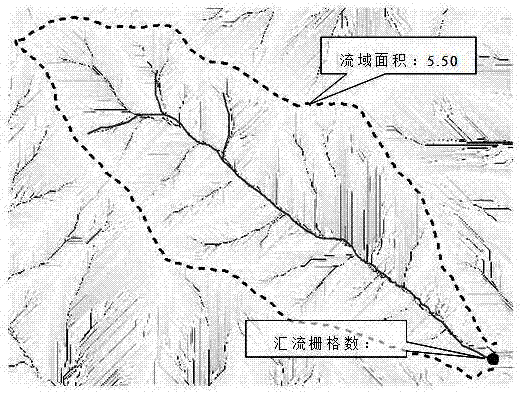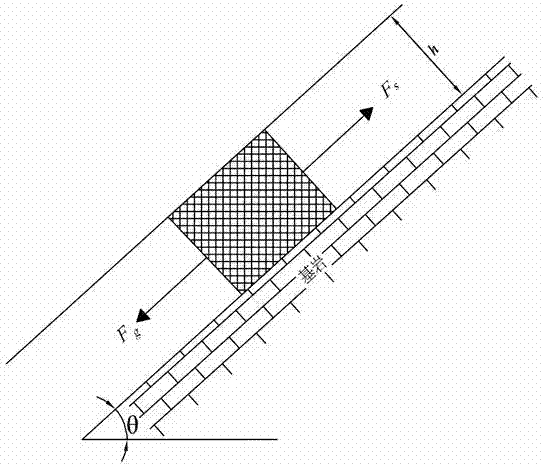A critical concentration-based debris flow initiation model and application thereof
A critical concentration and debris flow technology, applied in data processing applications, special data processing applications, instruments, etc., can solve the problems of subjectivity errors in evaluation results, inability to effectively cover rainfall, etc., and achieve the effect of easy parameter acquisition and simple calculation process
- Summary
- Abstract
- Description
- Claims
- Application Information
AI Technical Summary
Problems solved by technology
Method used
Image
Examples
Embodiment 1
[0047] A debris flow initiation model based on critical concentration, including the following steps:
[0048] a. Obtain the slope θ of the starting area through digital elevation model calculation, and obtain the friction angle φ and soil density ρ in the soil through field tests s , using the product of the surface area of the debris flow starting zone and the average thickness of the starting layer to quickly estimate the solid matter volume in the starting zone;
[0049] b. Obtain the water body density ρ of the debris flow basin by actually investigating the existing provenance conditions in the debris flow basin w , calculate the instability critical volume concentration C by formula 1 c ;
[0050]
[0051] c. Obtain the initial solid volume concentration C through field tests * and porosity, calculate the solid matter volume V in the loose layer of the stack s , according to formula 2 to calculate the volume of water body V required for the start-up of solid lo...
Embodiment 2
[0059] A debris flow initiation model based on critical concentration, including the following steps:
[0060] a. Obtain the slope θ of the starting area through digital elevation model calculation, and obtain the friction angle φ and soil density ρ in the soil through field tests s , using the product of the surface area of the debris flow starting zone and the average thickness of the starting layer to quickly estimate the solid matter volume in the starting zone;
[0061] b. Obtain the water body density ρ of the debris flow basin by actually investigating the existing provenance conditions in the debris flow basin w , calculate the instability critical volume concentration C by formula 1 c ;
[0062]
[0063] c. Obtain the initial solid volume concentration C through field tests * and porosity, calculate the solid matter volume V in the loose layer of the stack s , according to formula 2 to calculate the volume of water body V required for the start-up of solid lo...
Embodiment 3
[0078] A debris flow initiation model based on critical concentration, including the following steps:
[0079] a. Obtain the slope θ of the starting area through digital elevation model calculation, and obtain the friction angle φ and soil density ρ in the soil through field tests s , using the product of the surface area of the debris flow starting zone and the average thickness of the starting layer to quickly estimate the solid matter volume in the starting zone;
[0080] b. Obtain the water body density ρ of the debris flow basin by actually investigating the existing provenance conditions in the debris flow basin w , calculate the instability critical volume concentration C by formula 1 c ;
[0081]
[0082] c. Obtain the initial solid volume concentration C through field tests * and porosity, calculate the solid matter volume V in the loose layer of the stack s , according to formula 2 to calculate the volume of water body V required for the start-up of solid lo...
PUM
 Login to View More
Login to View More Abstract
Description
Claims
Application Information
 Login to View More
Login to View More - R&D
- Intellectual Property
- Life Sciences
- Materials
- Tech Scout
- Unparalleled Data Quality
- Higher Quality Content
- 60% Fewer Hallucinations
Browse by: Latest US Patents, China's latest patents, Technical Efficacy Thesaurus, Application Domain, Technology Topic, Popular Technical Reports.
© 2025 PatSnap. All rights reserved.Legal|Privacy policy|Modern Slavery Act Transparency Statement|Sitemap|About US| Contact US: help@patsnap.com



